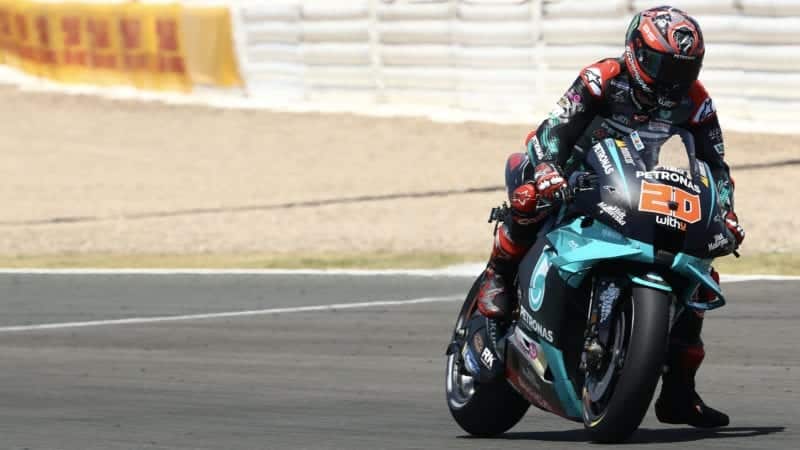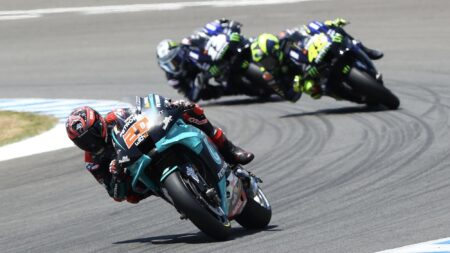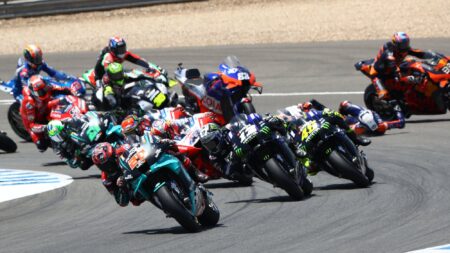It’s not just about how the rider uses the rear brake, it’s about how he plays with the bike to keep the rear tyre in contact with the asphalt, because if he allows the front end to dive too much, the rear tyre will lift and become useless during the braking phase.
Firstly, Quartararo hits the rear brake before he hits the front brake, to squat the rear of the bike and load the rear tyre. From there it gets more difficult to work out exactly what he does, unless you have access to his data.
Obviously, he won’t tell us his secret. “Honestly, I just have the feeling to brake really hard and I have really good confidence with the front tyre,” he said at Brno. “Here for the first time I’m losing a bit of rear contact on the brakes, not because the tyre is lifting but it’s just floating on the track, maybe because there’s a lot of downhill and uphill here. Honestly, the way I brake is natural.”
All we can say is that Quartararo plays with the bike, making micro adjustments every millisecond to front-brake pressure, rear-brake pressure, body position and everything else to modulate grip and therefore braking power between the front tyre and the rear tyre as he approaches the corner.
It’s possible that the most important work on improving deceleration with the rear tyre is done in pitlane. The main job of the crew chief and the engineers is to work with the bike’s front-rear traction balance.
As always, it’s about the traction circle of each tyre, which is what racing (bikes and cars) is all about: always maintaining the highest level of acceleration in the appropriate direction.
Riding down a straight the rider accelerates as fast as possible in the forward direction. On the brakes he accelerates as fast as possible backwards. When he goes around a corner he accelerates as much as possible to the inside of the corner, right or left. The traction circle refers to the available traction, 360 degrees around the contact patch.
During braking, as in everything else, the aim is to go to the very edge of the traction circle, in this case thinking about maintaining enough tyre-to-asphalt friction at the rear of the bike. This can be achieved via a huge number of settings changes.
For example, a shorter swingarm puts more load on the rear, but also makes the bike more nervous, so can the rider live with that, or will it create negatives in other parts of the lap?




